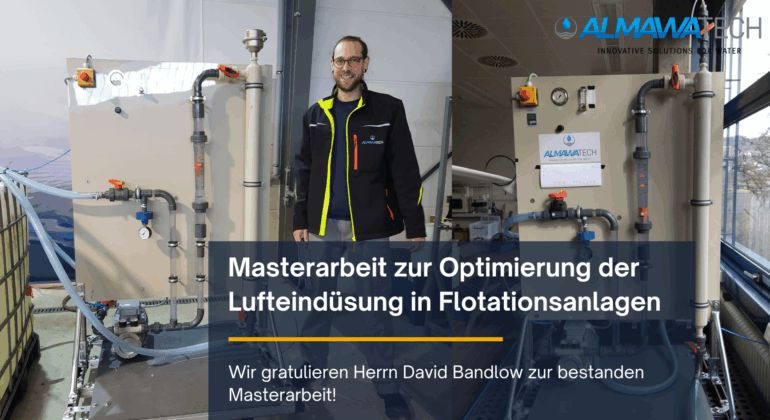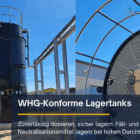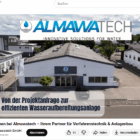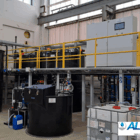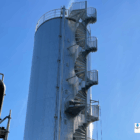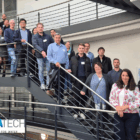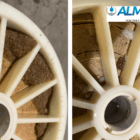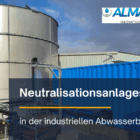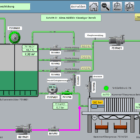As part of his master's thesis in environmental protection at Esslingen University of Applied Sciences, David Bandlow worked on a current and practice-relevant topic from the field of industrial wastewater treatment at ALMAWATECH:
"Optimization of the generation of fine air bubbles in dissolved air flotation"
Table of contents
Background and objectives
Dissolved air flotation is an established process for the separation of solids, COD, nitrogen, hydrocarbons and emulsions in industrial wastewater streams. The purification process is based on the targeted introduction of finely distributed air bubbles, which are generated by pressure-induced saturation and subsequent expansion in the medium. The aim of this work was to investigate the influence of different designs of the expansion components on the quality of air bubble generation and to derive conclusions for a process-optimized system design.
Methodology
For the tests, the expansion section of a large-scale flotation plant was replicated on a laboratory scale. To analyze the bubble distribution, an optical measuring chamber was constructed using 3D printing and equipped with a laser diffraction analyzer. In addition, imaging methods were used to visually evaluate the bubble pattern.
Several commercially available variants of pressure relief valves were compared with regard to their suitability for generating a homogeneous bubble pattern.
Key findings of the study
The results show that the design of the expansion valve has a significant influence on the formation and distribution of the air bubbles. Some valve types tend to produce a wider distribution of bubble sizes under certain conditions, which can influence the consistency of the flotation process. Other types produce a more even distribution, but with different energy efficiency and maintenance requirements. The assessment of the optimum valve therefore depends heavily on the respective operational objective.

Photo: Our ALMA NeoDAF flotation system with tube flocculator and the patented ALMA Bubble Booster air saturation system
Our technology: ALMA NeoDAF - energy-efficient, state-of-the-art flotation
The findings from the master's thesis are directly applied in the further development of our ALMA NeoDAF - a dissolved air flotation system that has been specially developed for industrial requirements. The ALMA NeoDAF flotation system is characterized by a particularly efficient bubble input, a compact design and low operating costs. Thanks to the targeted combination of precipitation, flocculation and micro-bubble flotation, it achieves a high separation efficiency with a wide variety of wastewaters.
A central component of the ALMA NeoDAF is the ALMA Bubble Booster - our patented air saturation system. Ambient air is drawn in through a motive flow nozzle using the Venturi effect - without any energy-intensive compressed air generation. The result: efficient and resource-saving operation combined with high microbubble quality.
To ensure that only fine bubbles enter the flotation cell, the ALMA NeoDAF is equipped with a two-stage bubble separator. This reliably removes larger air bubbles that could not be completely dissolved. This prevents turbulence, which would destabilize the flotate sludge carpet, as well as the re-dissolution of already separated pollutants. The combination of finely dispersed micro-bubbles and a smooth surface pattern leads to an exceptionally stable separation performance.
Another advantage of the system is the counter-current guided sludge and sediment discharge, which enables a uniform load along the flotation cell and minimizes re-dissolution effects. In addition, ALMAWATECH relies on automated, low-maintenance membrane valves for air dosing and intelligent integration of the air bubbles into the floc structure ("aerophilic floc formation") - for stable and long-lasting operation.
The ALMA NeoDAF is used in the food and dairy industries, the chemical industry, by waste disposal companies and in surface treatment - wherever wastewater contaminated with oil, solids or emulsions needs to be pretreated efficiently and in a space-saving manner.
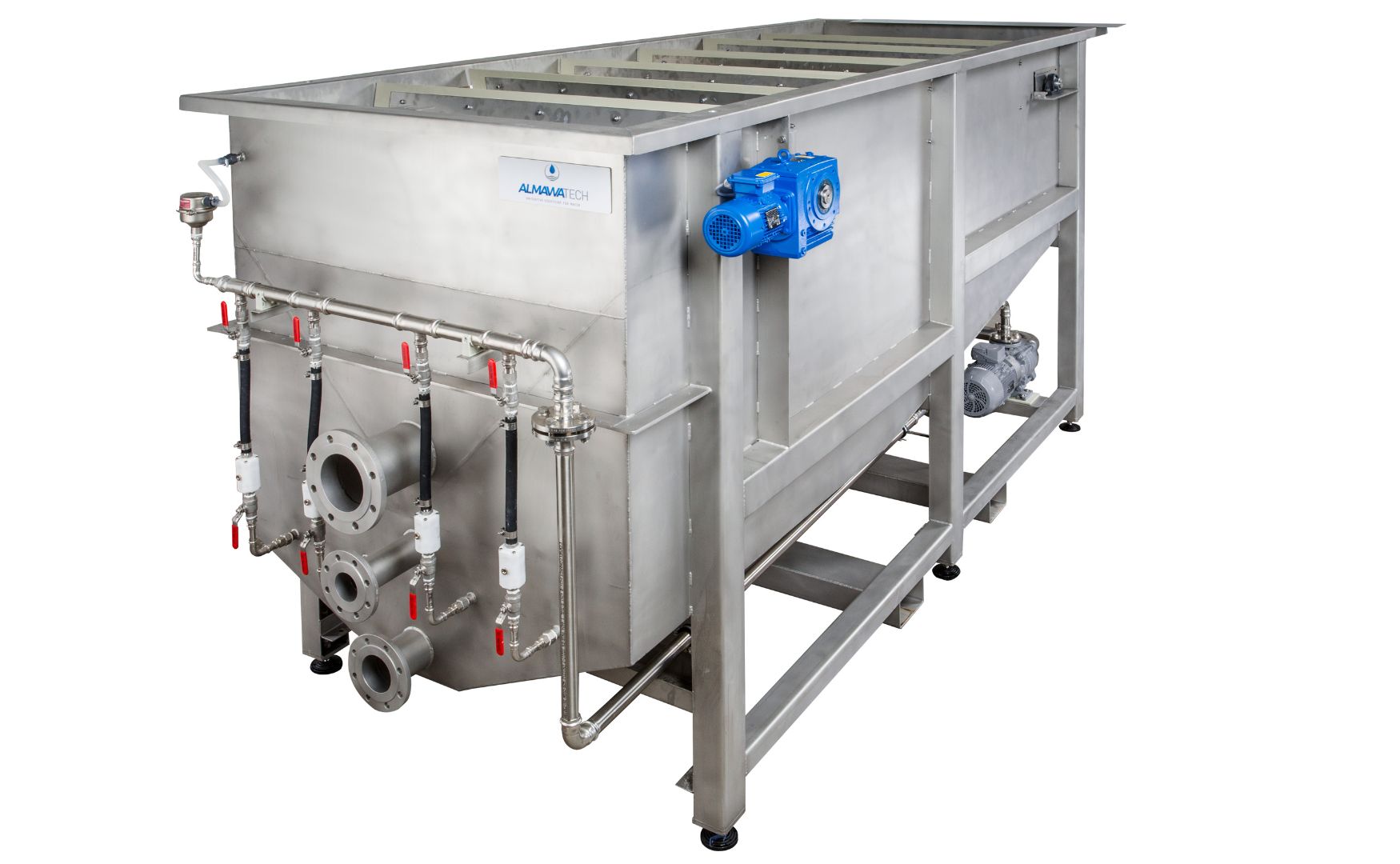
Photo: The flotation cell of our ALMA NeoDAF flotation plant
Practical relevance and acknowledgements
The findings from the work provide important information for the further development of the design and process engineering of our flotation systems - particularly with regard to energy efficiency, operational stability and ease of maintenance. In future, they will be incorporated into the design and evaluation of our ALMA NeoDAF systems.
We would like to thank David Bandlow for his excellent cooperation and his scientifically sound approach to a technical topic with high practical relevance. The work is a successful example of knowledge transfer between academia and industry.


